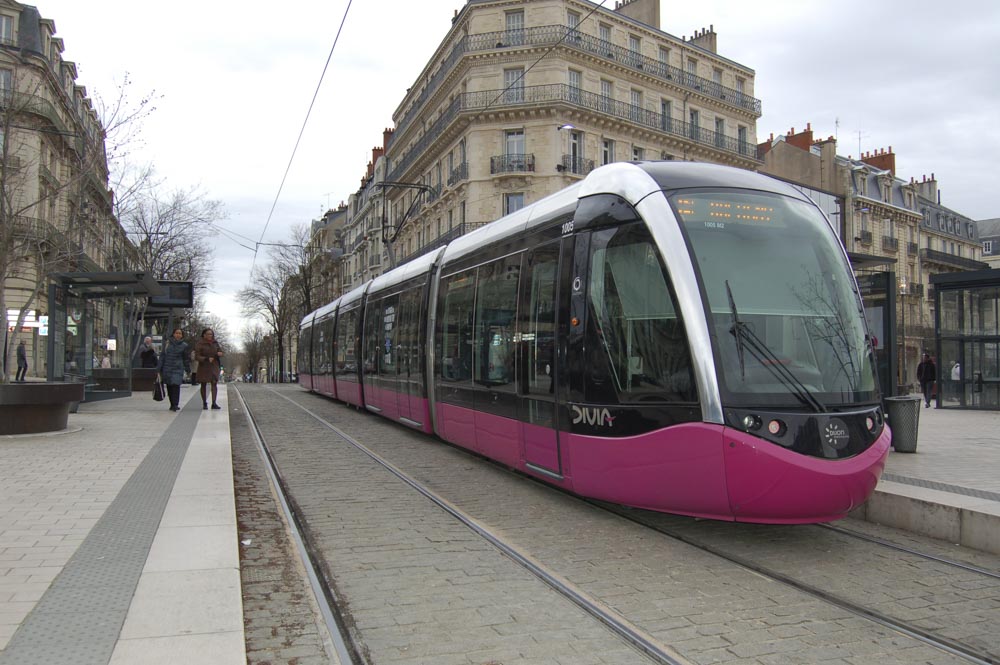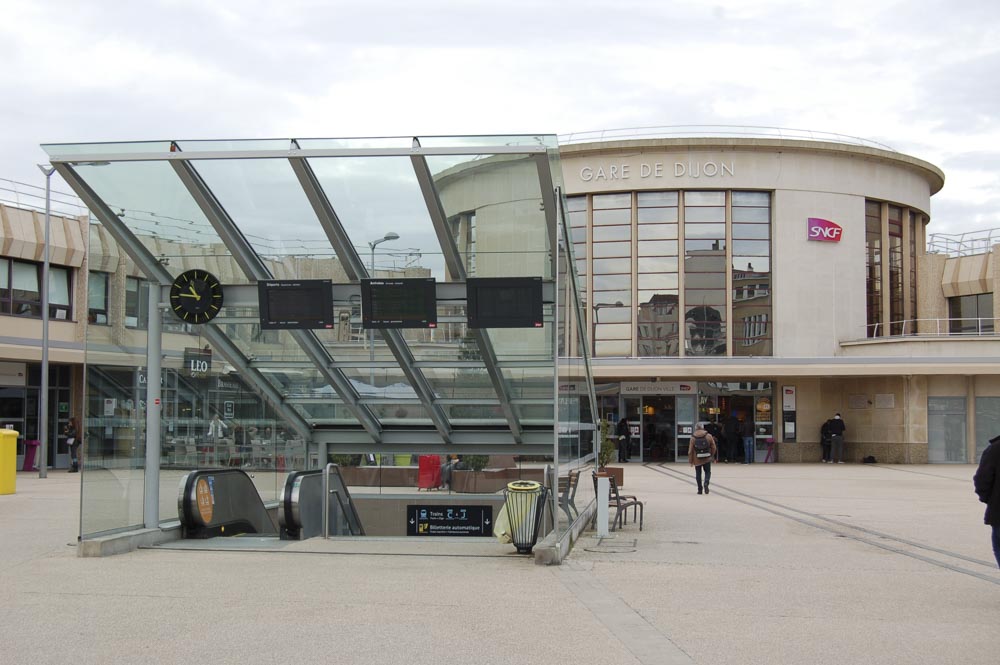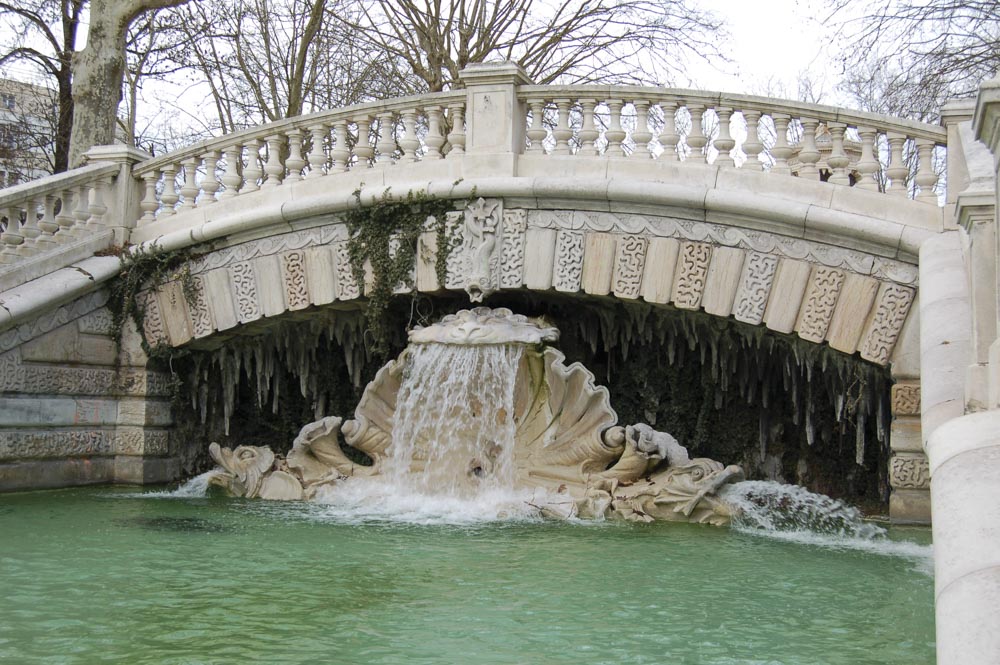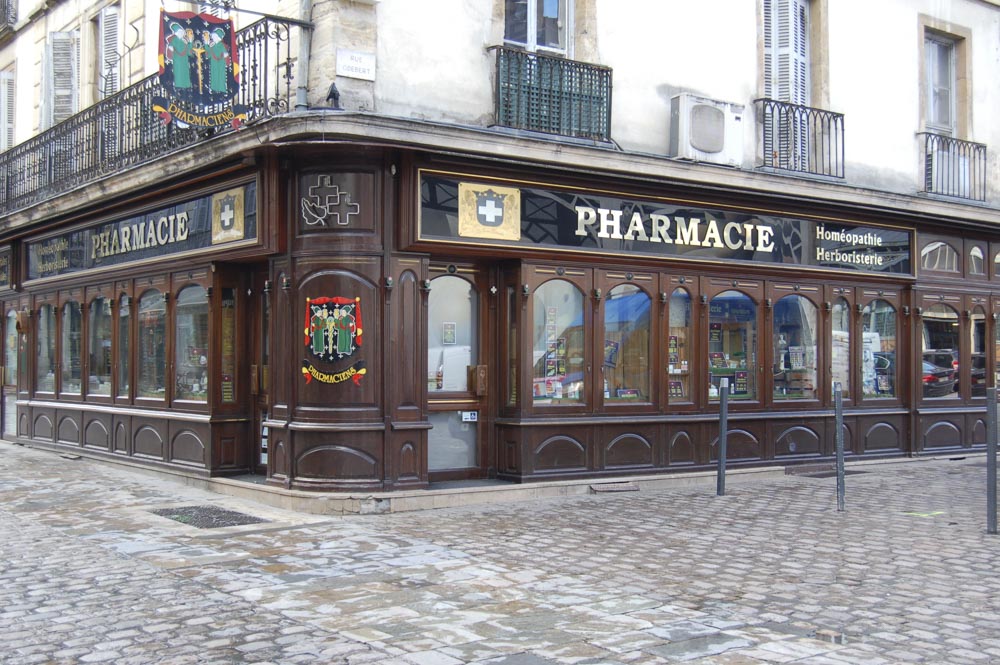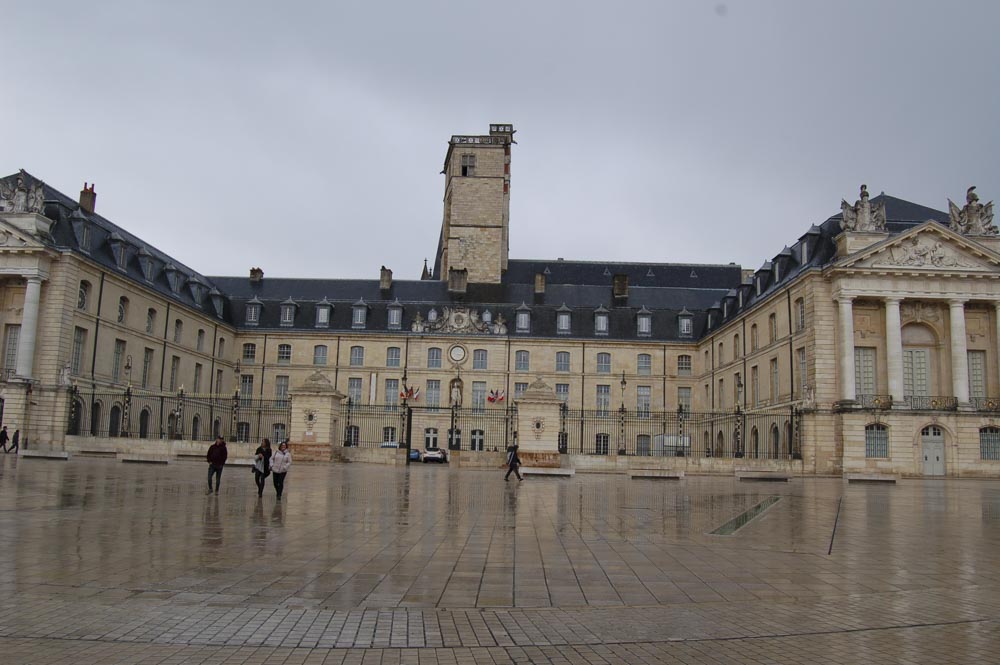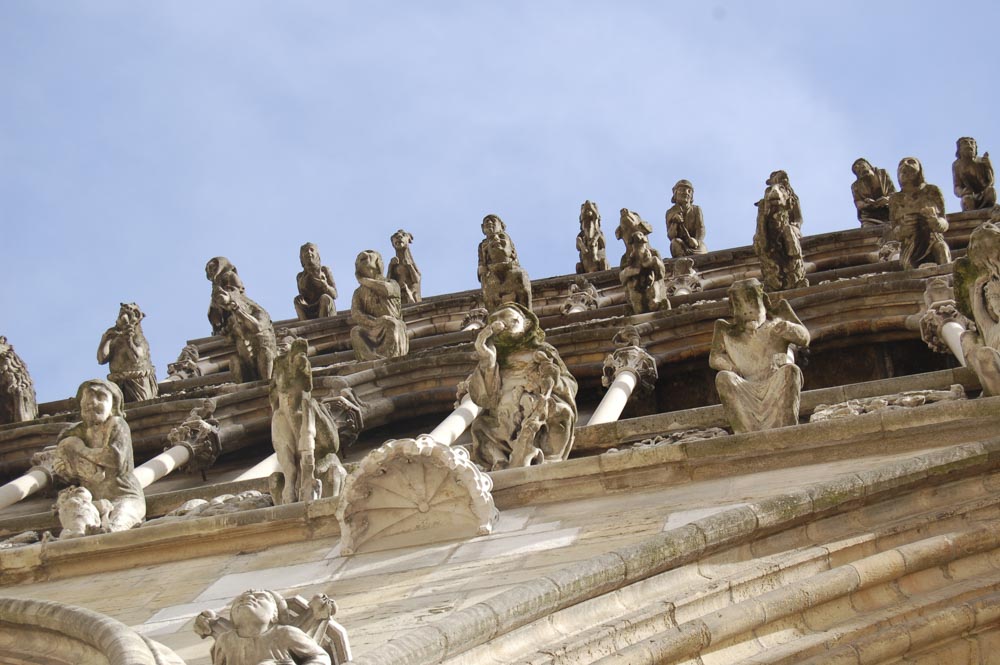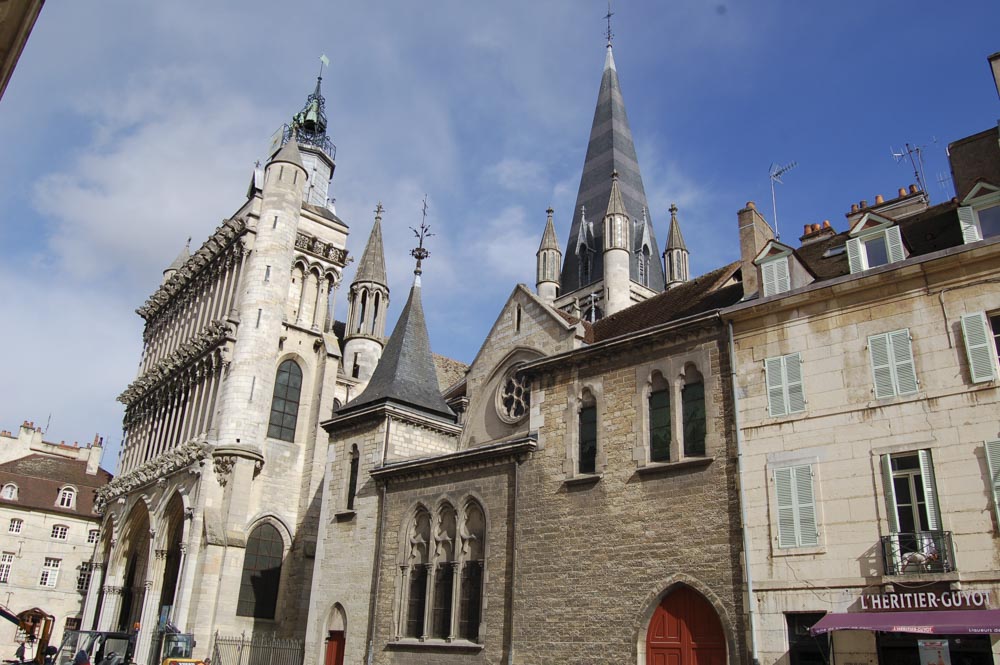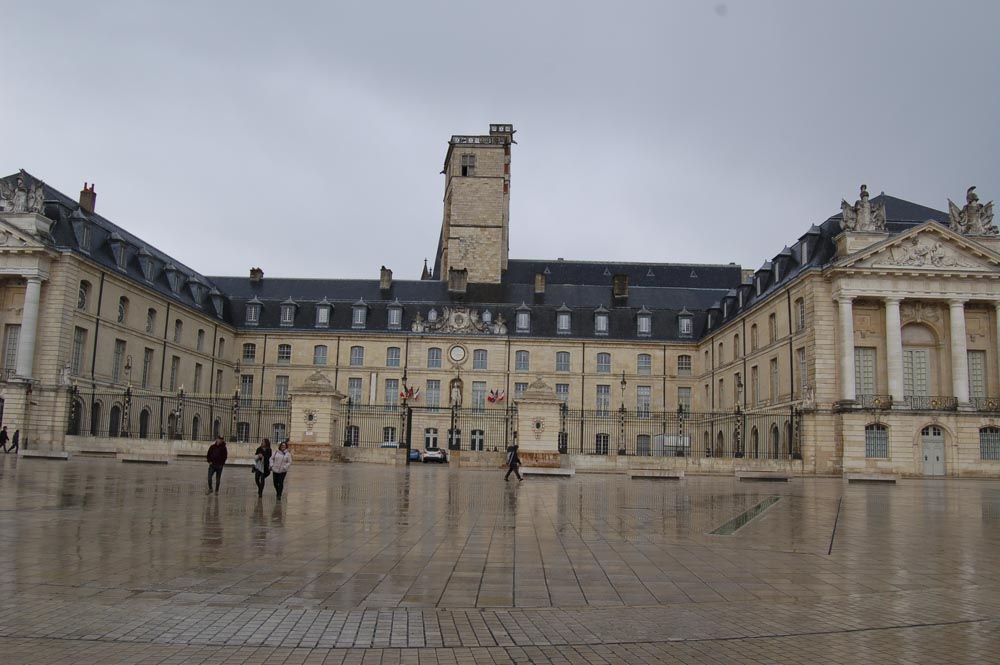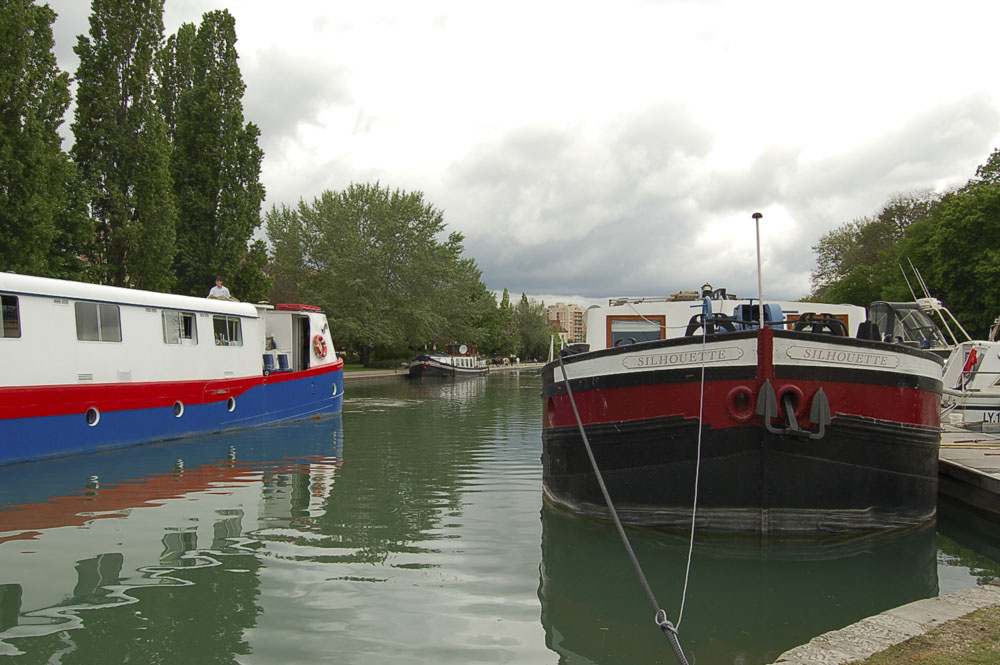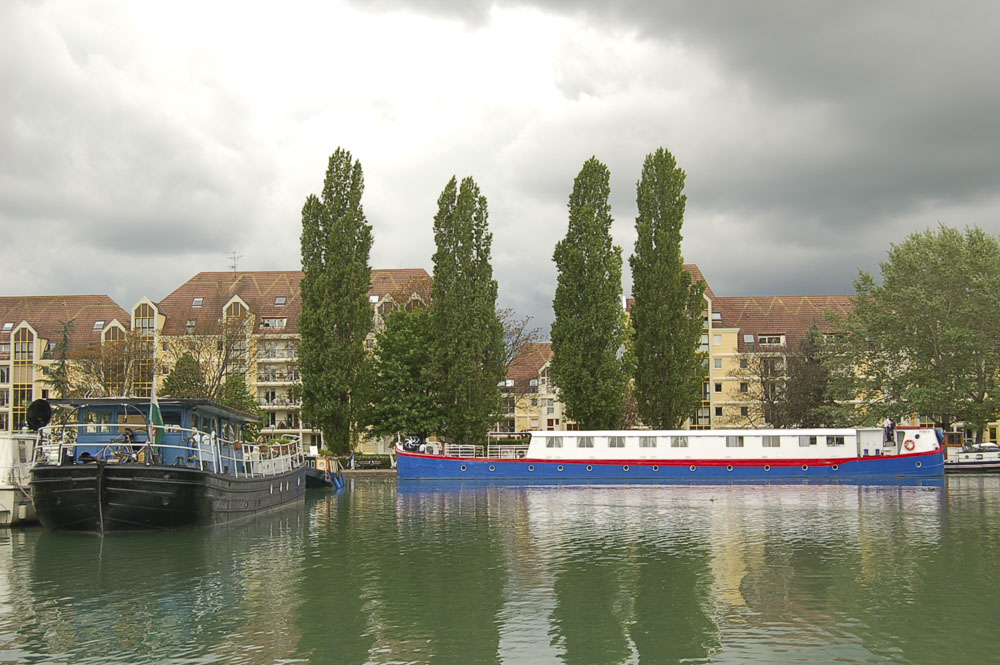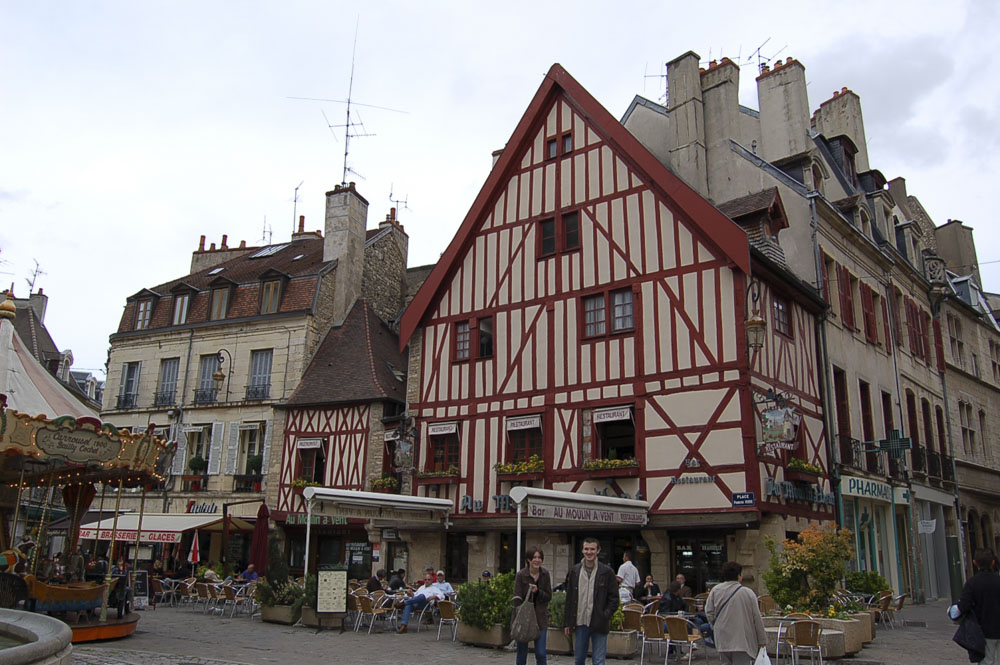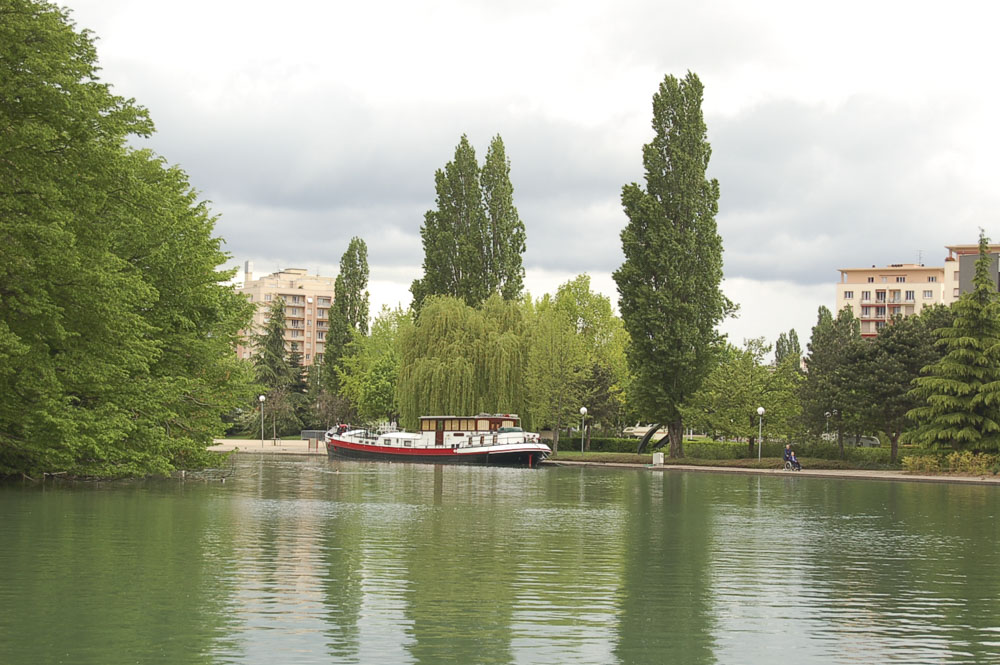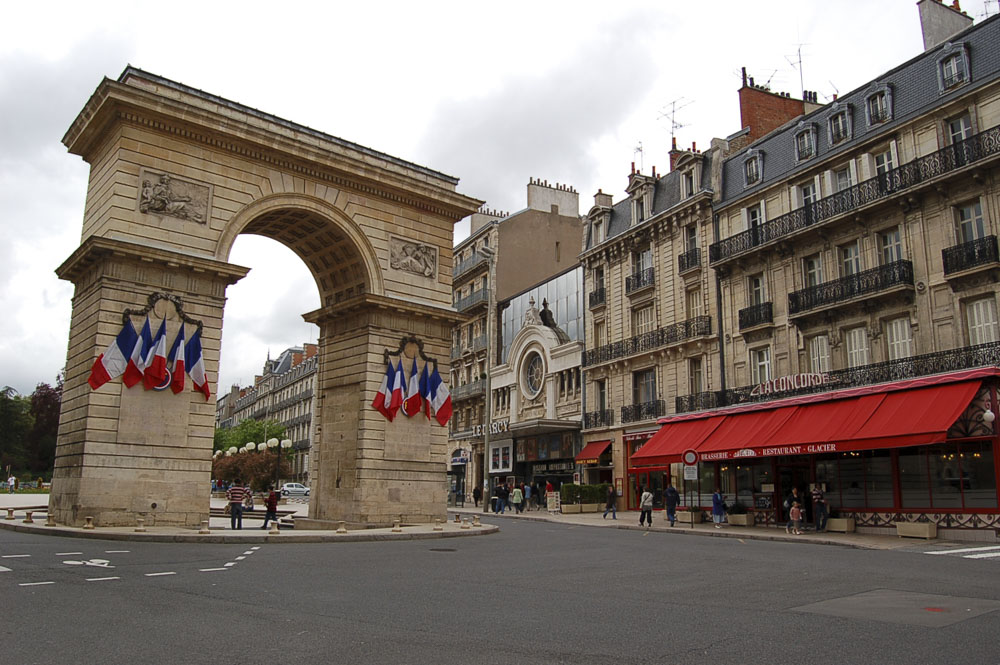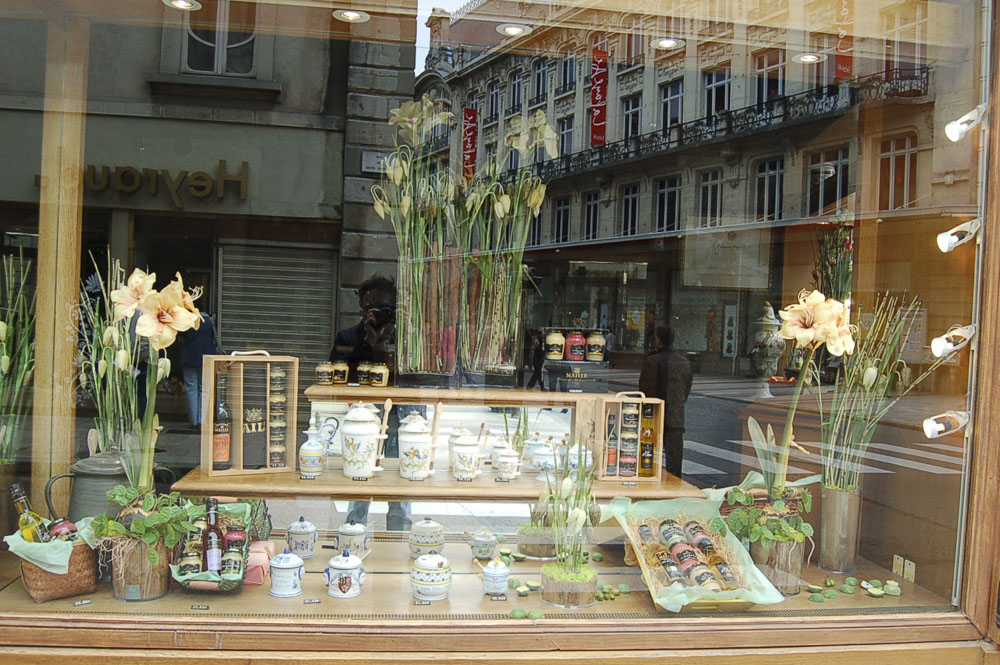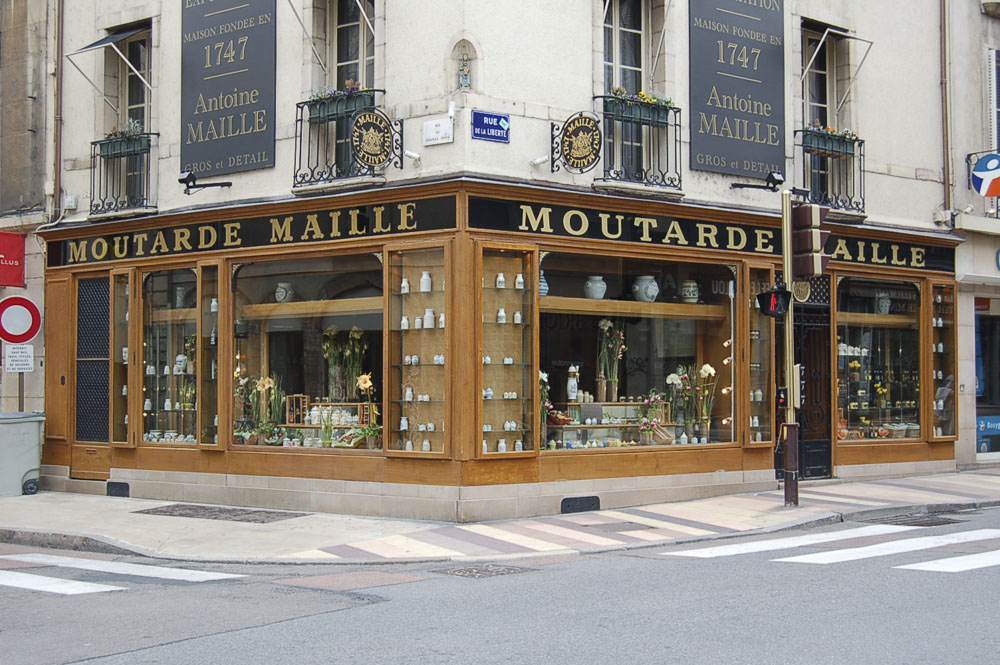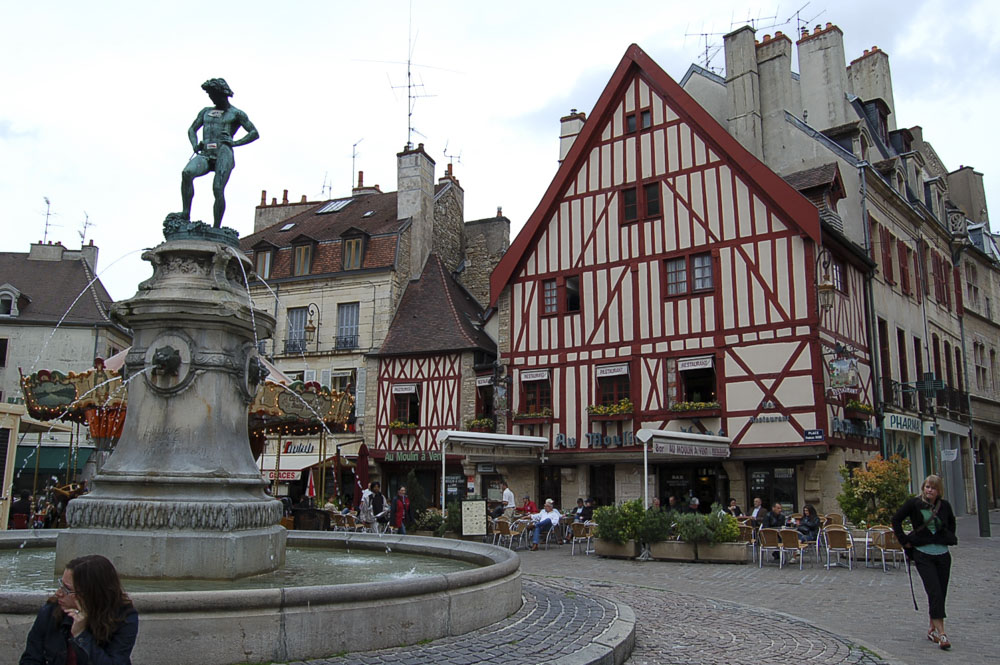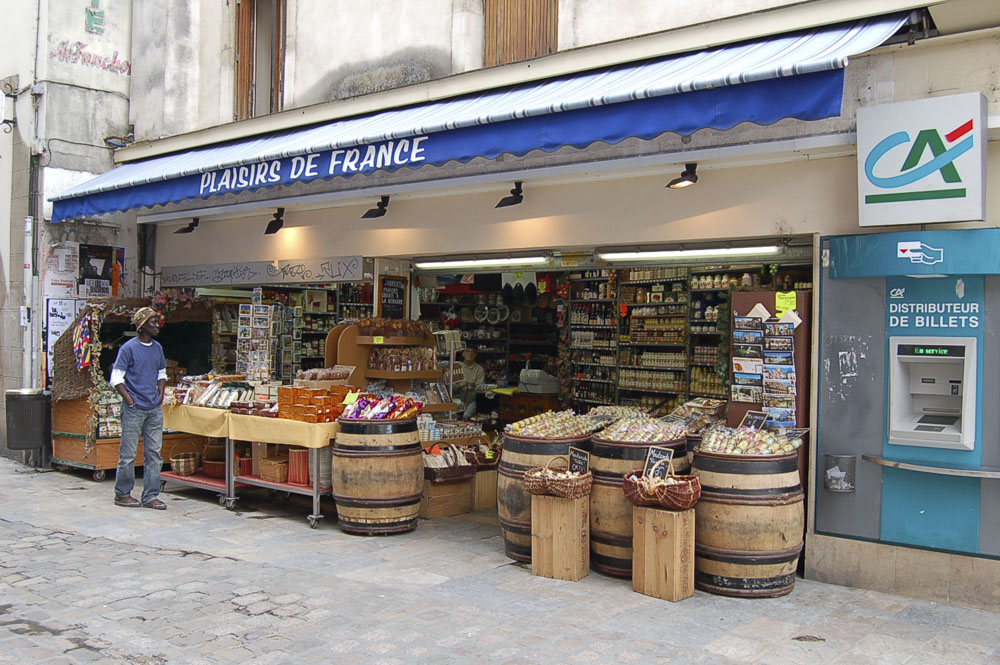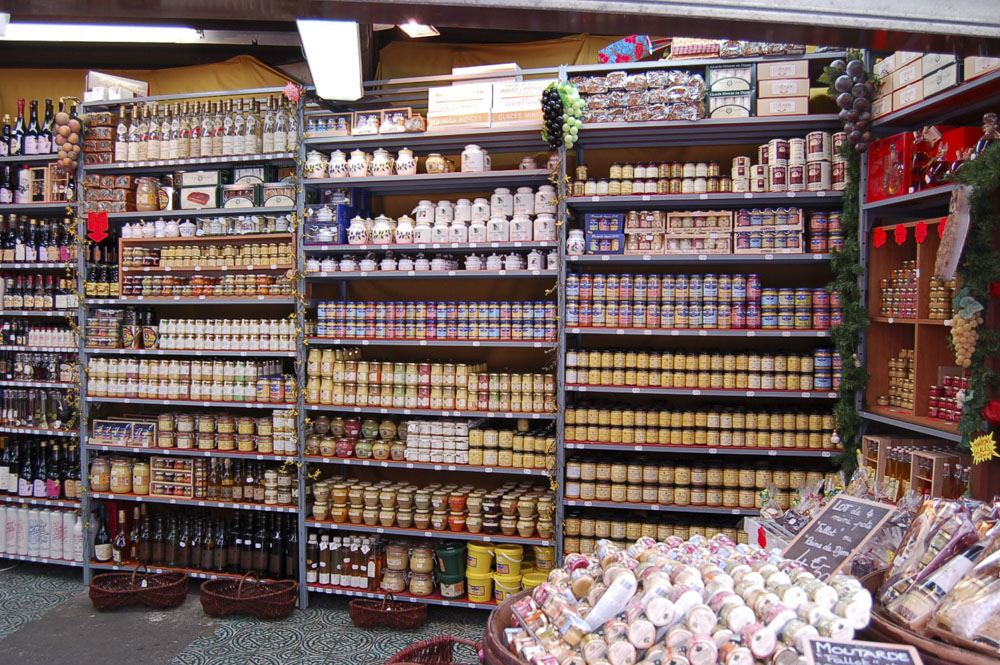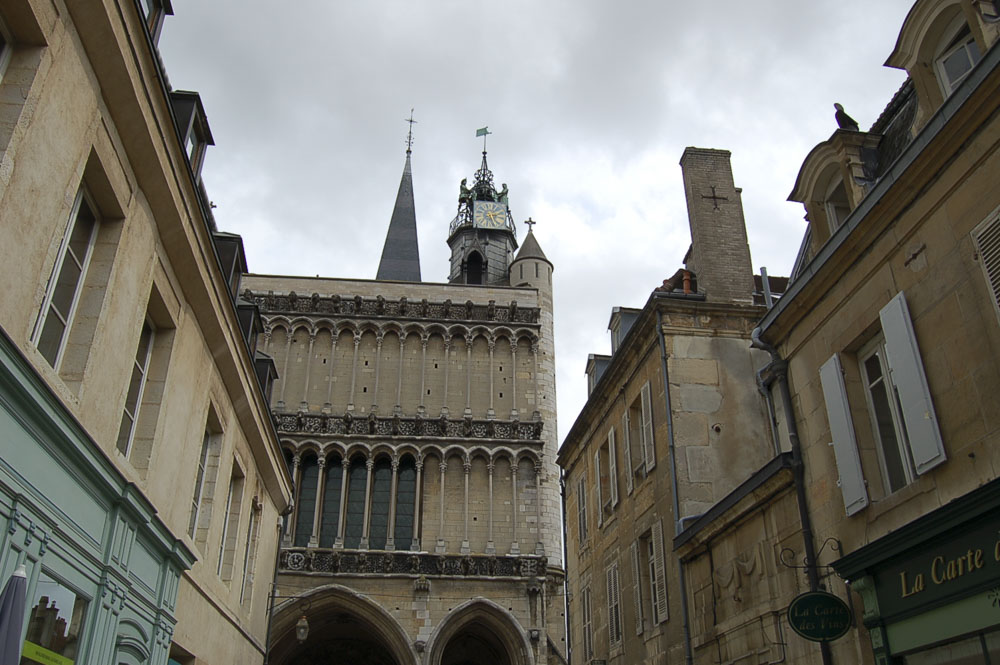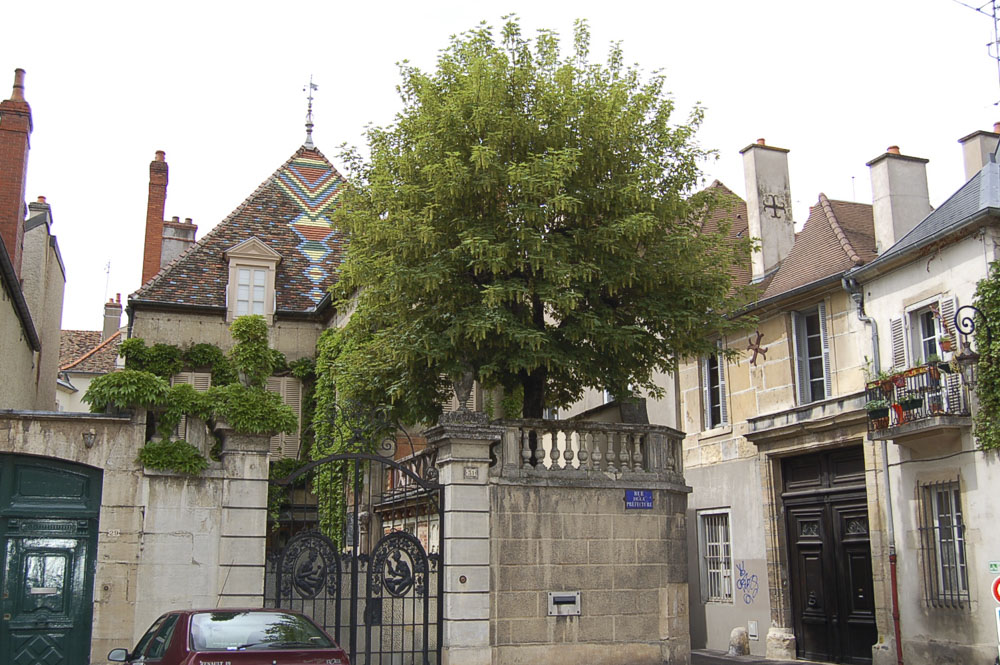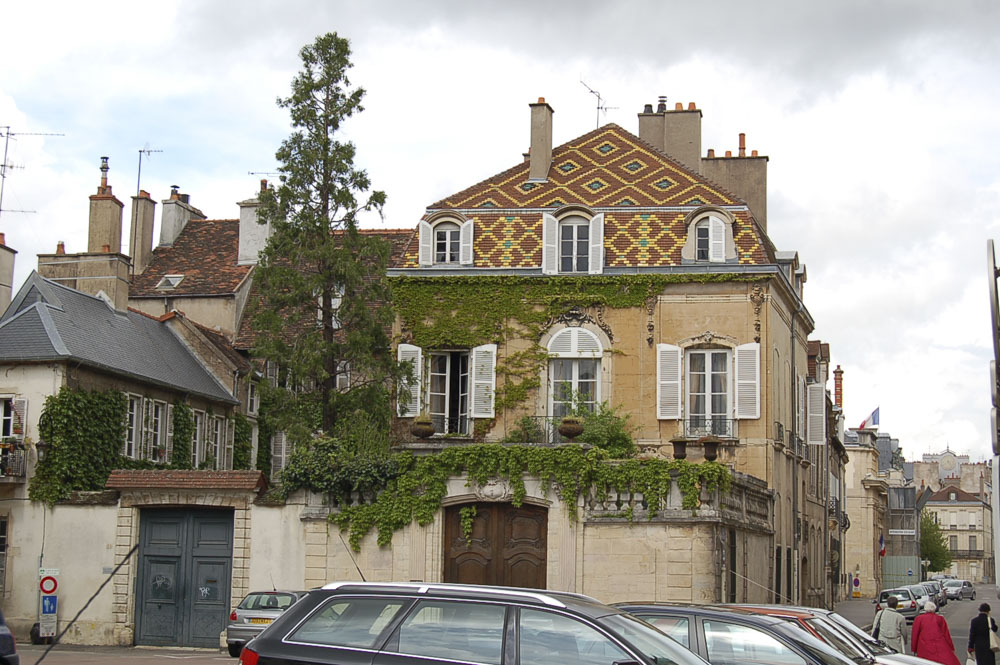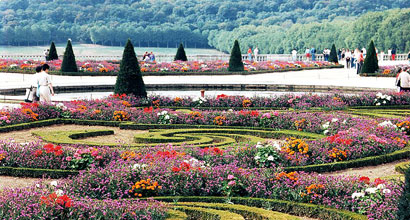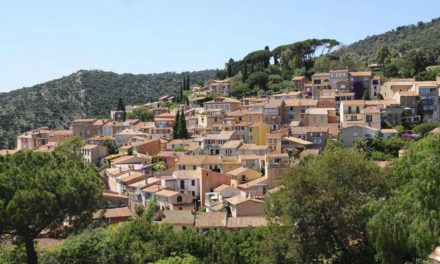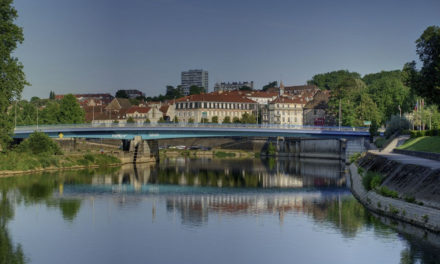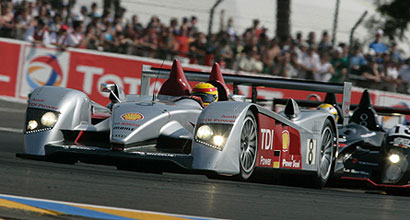Images – Copyright Informationfrance.
Capital of the Côte d’Or, Dijon, once the city of the Dukes of Burgundy has an exceptional architectural heritage. Their palace remains to this day, surmounted by the tower of Philip the Good. Within this is the city’s Musée des Beaux-Arts. Here you can see, amongst other things, a collection of French and Flemish art ranging from the early Renaissance to the Impressionist period. You can also explore the palace itself, including its spectacular kitchens that date back to the mid-1400s.
Dijon was spared the destruction of various wars – including the 1870 Franco-Prussian War, despite the fact that the Prussian army invaded the city. Polychrome-glazed-tile rooftops and half-timbered houses dating from the 12th to the 18th century abound, but Dijon retains examples from other architectural periods as well, including Gothic, Renaissance and Capetian.
The Cathedral of Saint Bénigne is considered one of the finest examples of Romanesque architecture, but also has superb Gothic elements, and its Cluniac rotunda and crypt are over 1,000 years old. Dijon boasts a surprisingly large number of other fine churches, including St-Etienne (now a cultural centre and museum to sculptor François Rude), Flamboyant Gothic St-Michel and Eglise Notre-Dame with its splendid Jacquemart Clock.
Look out for the curious carving of an owl in a niche on Notre-Dame, in rue de la Chouette (‘road of the owl’). It has become regarded as a good-luck charm – local people touch it with their left hand and make a wish. The owl has become a symbol of the city, and a walking trail marked by brass plaques set in the pavements will take you on an excellent self-guided tour. Pick up a leaflet at the Tourist Information office at the station or the Palais des Ducs.
There are numerous museums in Dijon, ranging from the world-class Beaux-Arts in the ducal palace to museums of sacred art, local life, and archeology – plus a quirky original, devoted to the delicious mustard for which Dijon is justly famous. The city also has many lovely parks and gardens, and a port on the Burgundy Canal offers boat tours of the surrounding area.
The Dijon City Pass
Book a Hotel in Dijon
Restaurants in Dijon
Location
Dijon is located approximately one hour and 40 minutes southeast of Paris by the TGV high-speed train. For comparison, Lyon is two hours distant, Nice takes about six hours by TGV and Strasbourg about three hours. By car, Dijon is about three hours from Paris.
Dijon is home, every three years, to the international flower show Florissimo.
To the northwest of Dijon, the race track of Dijon-Prenois hosts various motor sport events. In the past, it once hosted the Formula 1 Grand Prix of France.
Dijon is home to Dijon FCO, a football team in Ligue 2, the second-highest league in French football.
Dijon Mustard
Dijon is famous for its mustard, even though nowadays around 90% of all mustard seeds used are imported, mainly from Canada. The term Dijon mustard (moutarde de Dijon) designates a method for the making of mustard. Traditional Dijon mustard is particularly strong. Most Dijon mustard (brands such as Amora or Maille) is produced industrially, but the town also specialises in exotic or unusually-flavoured mustard, often sold in decorative hand-painted faïence (china) pots. In non-European markets such as the United States, the name “Dijon mustard” is not trademarked. The only way to be sure you are getting real Dijon mustard is to buy a jar that was imported from France; however, true Dijon mustard in exotic flavours can be difficult to find outside France.
Vineyards
As the capital of the Burgundy region, Dijon reigns over some of the best wine country in the world. Many superb vineyards producing vins d’appellation contrôlée, such as Vosne-Romanée and Gevrey-Chambertin, are within 20 minutes of the city centre. The town’s university boasts a renowned oenology institute. The drive from Santenay to Dijon, known as the route des Grands Crus, passes through an idyllic countryside of vineyards, rivers, villages, forests, and twelfth-century churches. The region’s architecture is distinguished by, among other things, toits bourguignons (Burgundian roofs) made of tiles glazed in terra cotta, green, yellow and black and arranged in eye-catching geometric patterns. The city is also well known for its crème de cassis, or blackcurrant liqueur, used in the drink known as “Kir” (white wine, especially Bourgogne aligoté, with blackcurrant liqueur, named after former mayor of Dijon canon Félix Kir). The same drink made with champagne instead of white wine is known as a Kir Royal.
The American food writer M.F.K. Fisher, who moved to Dijon shortly after her marriage in 1929, wrote about the region’s cuisine in Long Ago in France.
Office of Tourisme
Copyright Images : Informationfrance


